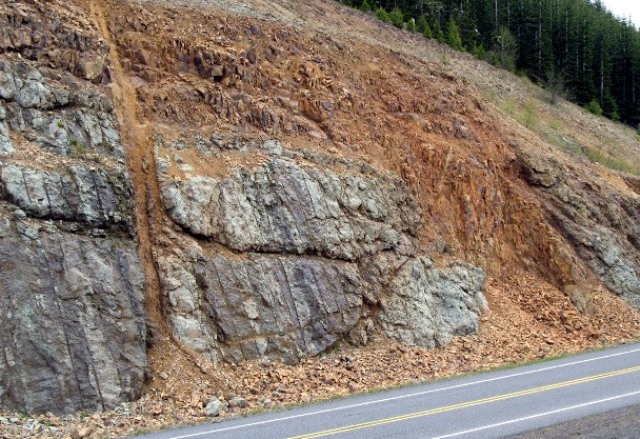Hydrothermal Alteration
The heat contained within a volcano stimulates the circulation of heated groundwater through the volcanic edifice. This hotwater breaks down the original igneous minerals of the lava and debris flows into soft clays and iron oxides. Sometimes valuable mineral deposits form, but in all cases the rock is greatly weakened. When combined with the steep slopes of the volcanoes and the heavy rainfall of the Pacific Northwest, these weak rocks are prone to failure as landslides or even whole sector collapses, with resultant avalanches and lahars.
Alteration of St Helens lavas as seen on Spirit Lake Highway. Photo by James Maynard © 2010 - free use with attribution

Hydrothermal alteration, St Helens. Photo by James Maynard © 2010 - free use with attribution

Fragile, hydrothermally altered clasts in lahar deposits, St Helens. Photo by James Maynard © 2010 - free use with attribution
See Rainier Page for more details on non-eruptive lahars
